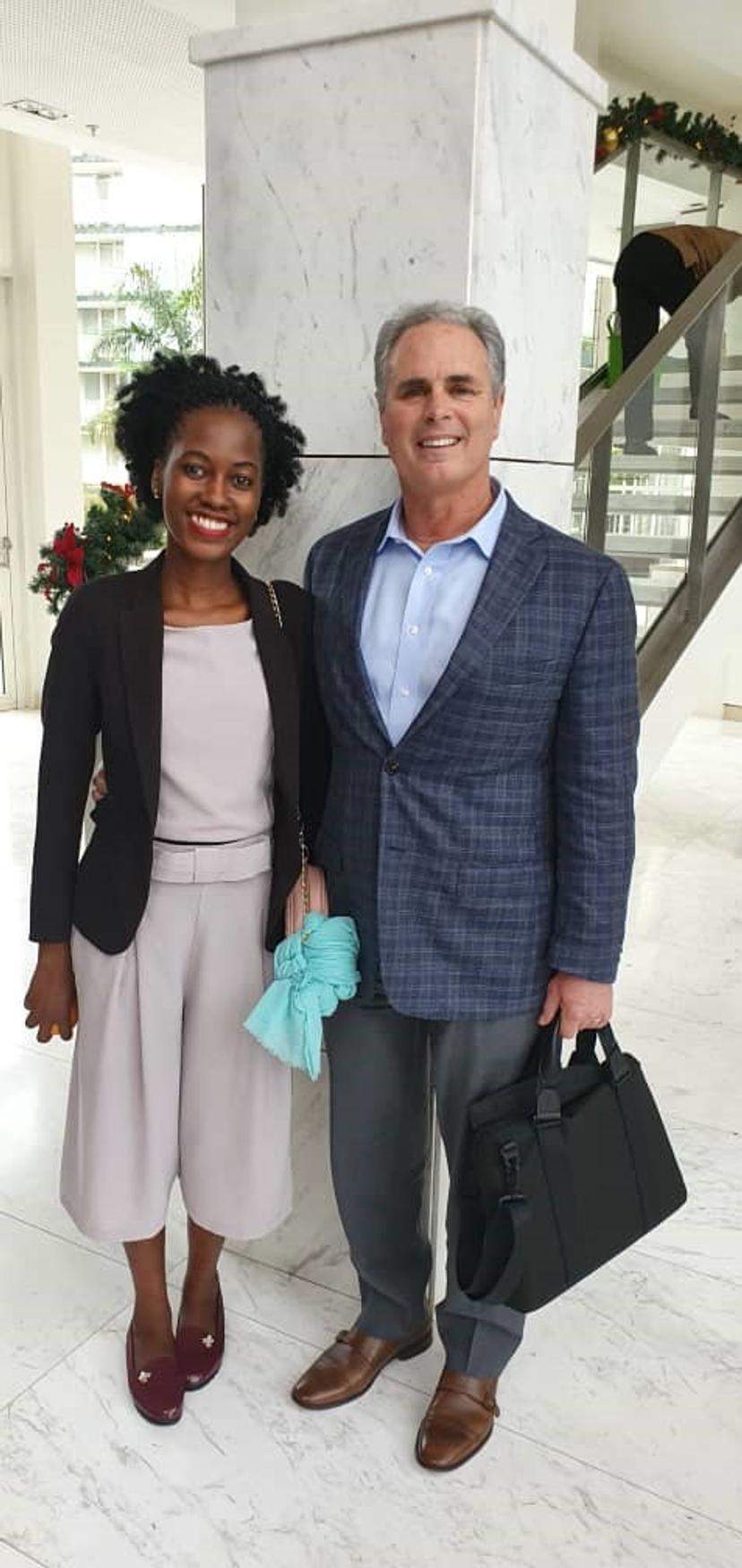How innovations in diagnostics are improving the outlook for cancer patients in Africa
Technology advances, coupled with collaborations between equipment makers and healthcare organizations, are improving early detection of blood cancers in Africa
6 May 2025
This guest editorial was written by Tony Boova, MPH, Principal of Medical and Scientific Affairs at Beckman Coulter Life Sciences. Tony is pictured here with the recipient of Beckman's community service award for work supporting HIV-positive youth.
Cancer deaths in Africa are expected to more than double1 by 2040 to nearly 1.4 million per year, fueling efforts by global health advocates such as the World Health Organization to improve early detection and prevention efforts in the region. Among the priorities are leukemia and lymphoma, including Burkitt’s lymphoma, a common form of blood cancer that’s highly treatable if it’s caught in its earliest stages. In some parts of Africa the five-year survival rate for children diagnosed with the disease is just 30% to 50%2, well below the United States, where the five-year survival rate3 of pediatric patients with Burkitt’s lymphoma is 90%.
The challenge facing communities in some parts of Africa is a lack of access to accurate testing and diagnosis—services that are difficult to provide in locations that are often remote, under-staffed and under-resourced. Among the institutions that have struggled are the Moi Teaching and Referral Hospital in Kenya and the Ministry of Health National Laboratory Diagnostic Services in Uganda, which once estimated that only 20% of patients4 with Burkitt’s lymphoma in the region were accurately diagnosed and treated.
Improving access to cancer testing in Africa will require innovative collaborations between laboratory equipment makers, health nonprofits and medical professionals on the ground. My company, Beckman Coulter Life Sciences, is participating in one such effort along with the Burkitt Lymphoma Fund for Africa. Together we are enabling testing equipment and training to be established in underserved regions of Africa. We have delivered 35 million tests across Africa so far, and two pilot laboratories for leukemia and lymphoma testing in Africa have seen patient survival rates increase from 10% to 50% over five years.
The lessons we have learned about adapting existing testing technology to fit specific conditions in Africa could be instructive to others hoping to replicate this effort in other resource-constrained countries.
Streamlining diagnostic workflows
When we first traveled to Kenya to identify partners for our first pilot program5, we learned that most diagnostic laboratories were working with outdated flow cytometry equipment that was made in the 1980s, and they could only obtain about one-third of the antibody reagents they needed to run accurate cancer-detection tests. What’s more, the antibodies they could access had to be purchased in large quantities and in liquid form. They often struggled to mix the reagents properly, limiting the stability of the tests, and if they didn’t use the mixtures quickly enough, they’d expire. Another hurdle was a shortage of pathologists trained to run cancer tests.
To address the specific diagnostic challenges faced by labs in Africa, we worked with Steven J. Kussick, M.D., Ph.D., Director of Hematopathology and Flow Cytometry for PhenoPath Laboratories. Kussick designed a four-tube, five-color test to identify blood cancers. Beckman Coulter Life Sciences developed dried antibody reagents for the test that could maintain their stability without refrigeration. We then provided state-of-the-art flow cytometry equipment to streamline the assay so it could be done in a single tube, producing immunophenotyping results to support our clinical research producing results in a matter of hours vs. days, or sometimes weeks, that were required with older technologies.
The switch to dried reagents also cut costs for the labs running the cancer tests, because they no longer had to spend a lot of money keeping inventory on site of liquid reagents that they often didn’t need. And they didn’t need to rely on refrigeration—a resource that may be inaccessible for some labs.
The first patient we diagnosed in Africa had acute promyelocytic leukemia, a cancer that’s highly curable if it’s caught early, but nearly always fatal in more advanced stages. The rapid diagnosis likely saved this patient’s life. That outcome “really hammered home the point that this is important work and we need to keep it going,” Kussick said in a video about the project in Africa5.
Promoting partnerships
The ongoing effort to improve cancer diagnosis, treatment and outcomes in Africa hinges on effective partnership between many different types of institutions. In Malawi, for example, one of our key partners is the Texas Children's Hospital at the Baylor College of Medicine. Its program, Project Global HOPE6, is building capacity in Malawi and several other Sub-Saharan Africa countries to improve the diagnosis and treatment of pediatric cancers and blood diseases. There are now two pediatric hematologist/oncologists there diagnosing and treating about 180 children with cancer per year. Beckman Coulter Life Sciences provides the hardware and reagents for the diagnostics—offered on a compassionate pricing model—with partners pitching in to help train laboratory workers. We are now expanding this model to Tanzania.
This team effort is already improving access to cancer diagnosis and treatment in Africa. Since 2018, more than 3,000 people have been tested, 70% of whom are children7. With expanded access to testing, they're able to get treatment much more quickly, which will undoubtedly result in lower mortality rates. This shows the power of teamwork in improving cancer outcomes: When organizations with a diverse expertise get together to solve problems in healthcare, we can save lives.
This guest editorial was written by Tony Boova, MPH, Principal of Medical and Scientific Affairs at Beckman Coulter Life Sciences.
References
1 https://gco.iarc.fr/tomorrow/en/dataviz/tables
2 https://pmc.ncbi.nlm.nih.gov/articles/PMC6919213/
3 https://pmc.ncbi.nlm.nih.gov/articles/PMC7448606/
4 https://onlinelibrary.wiley.com/doi/10.1002/pbc.29768
6 https://www.texaschildrens.org/texas-childrens-global-health/programs/global-hope
7 https://www.texaschildrens.org/content/media/making-great-strides
